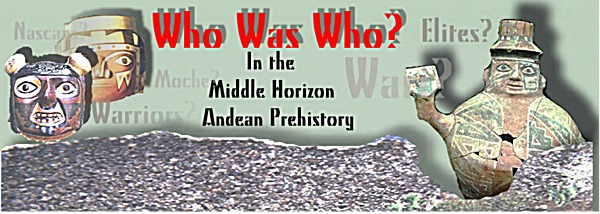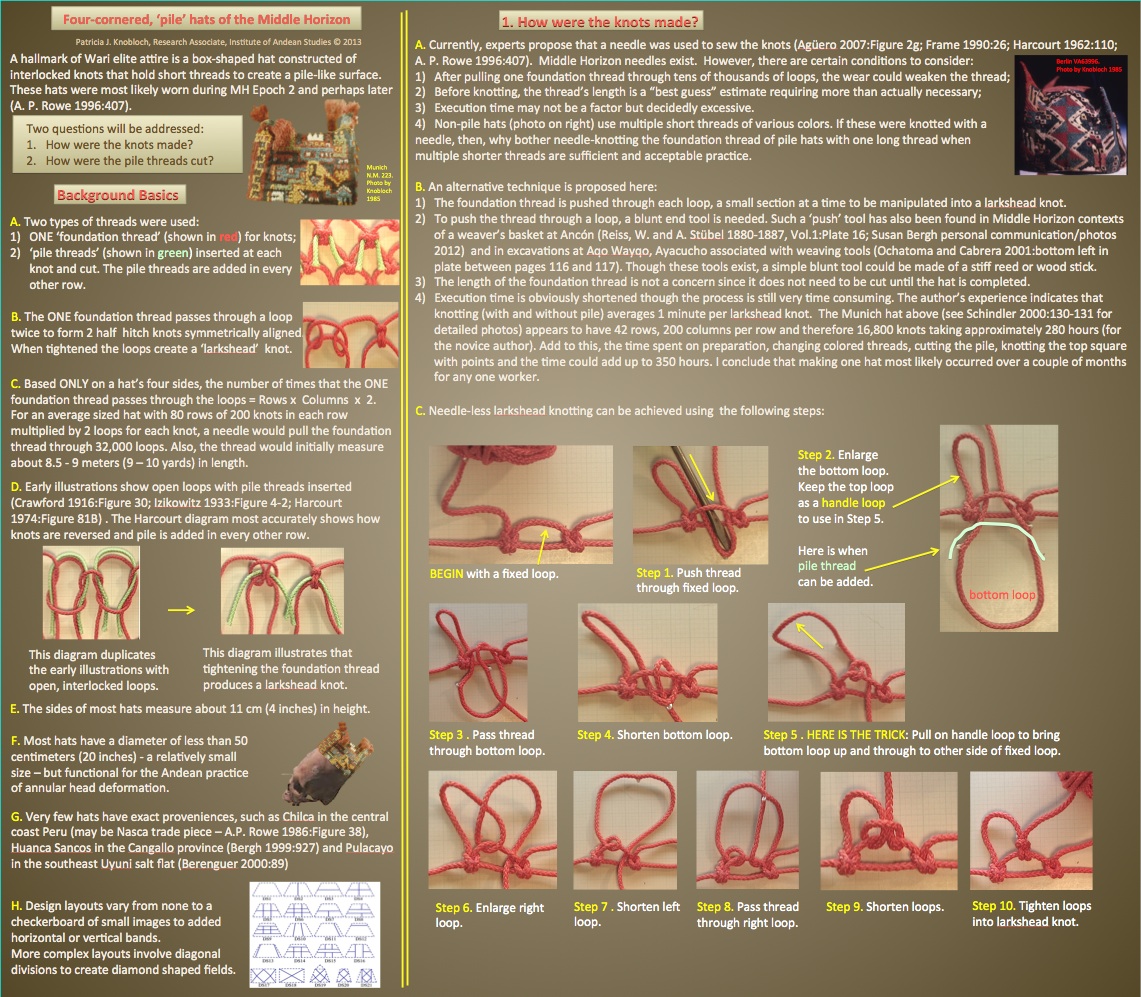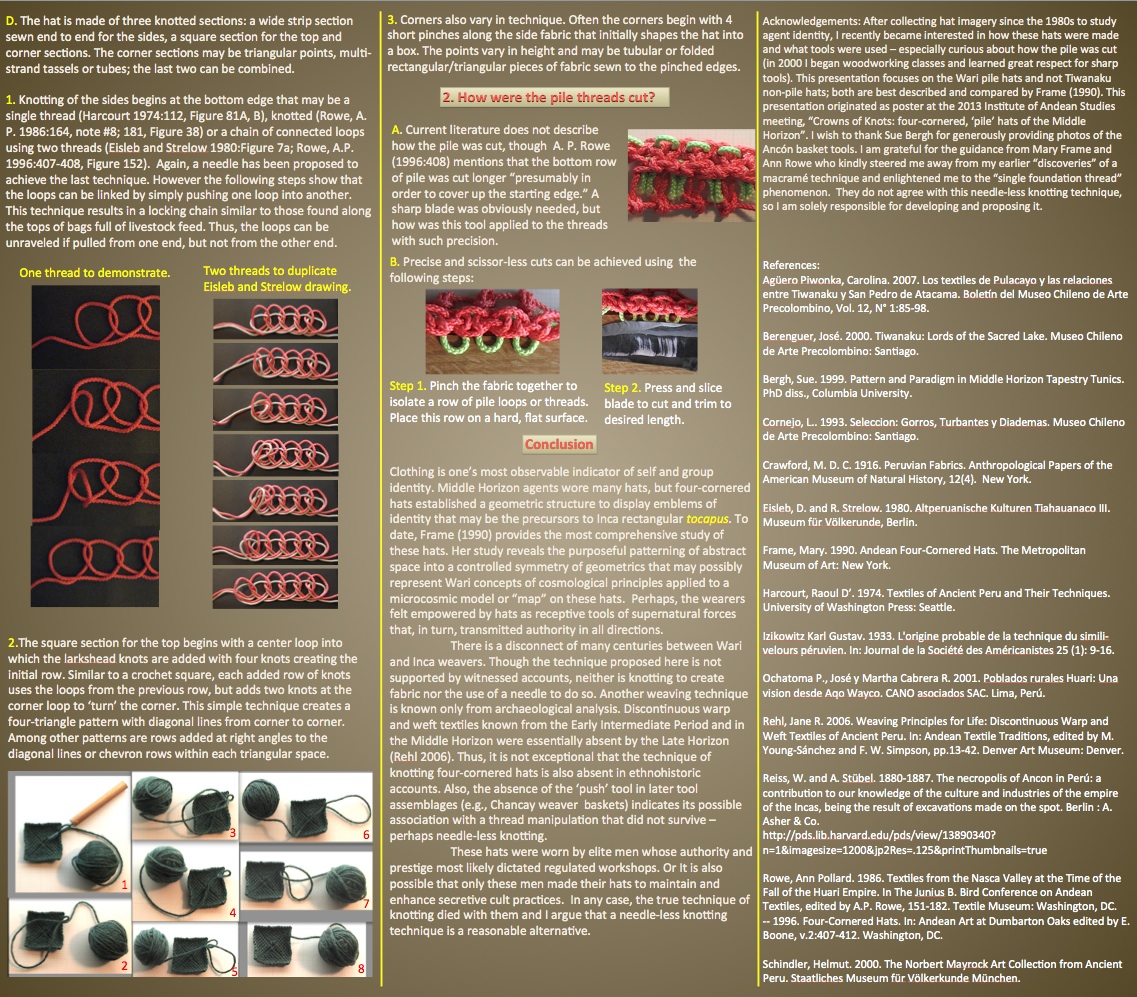




Contact
Home


|

|

|

|

|
References
Contact Home |
|
FOUR-CORNERED HAT INVENTORY During the Middle Horizon (700-1000 CE), two dominant Andean cultures, Wari and Tiwanaku, created a textile that defied the tradition of pan-Andean woven cloth. Traditional warp and weft fabrication was disregarded in favor of manipulating yarn into rows and rows of larkshead knots to form the fabric of block-shaped, four-cornered hats. Each corner of the square top was extended into points, tassels or closed tubes. Two techniques produced hats with and without pile surface designs. With pile hats, designs were created by adding colored yarns to each larkshead as the knotting of a continuous foundation thread formed the fabric. In this manner, the colored yarns formed loops that were then precisely cut into a fringe. With non-pile hats, designs were made by knotting different, shorter colored yarns into larkshead knots; this produced a thinner cloth. Pile hats are considered a Wari fabrication, whereas non-pile hats are Tiwanaku. This observation and others are explored with analyses based on an extensive inventory of such hats. Both are assumed to have been accomplished using a threaded needle. Needle sewing is also an ancient, pan-Andean textile trait. However, rather than sewing the knots, an interlooping with simple looping stitch (Emery 1966, pp. 39, 242) technique is introduced here that accomplishes the same larkshead knotting without a needle. Perhaps, due to the rooted sewing and weaving traditions, a looped knotting practice used exclusively for Wari and Tiwanaku’s four-cornered hats fell out of fashion after imperial demise. |

